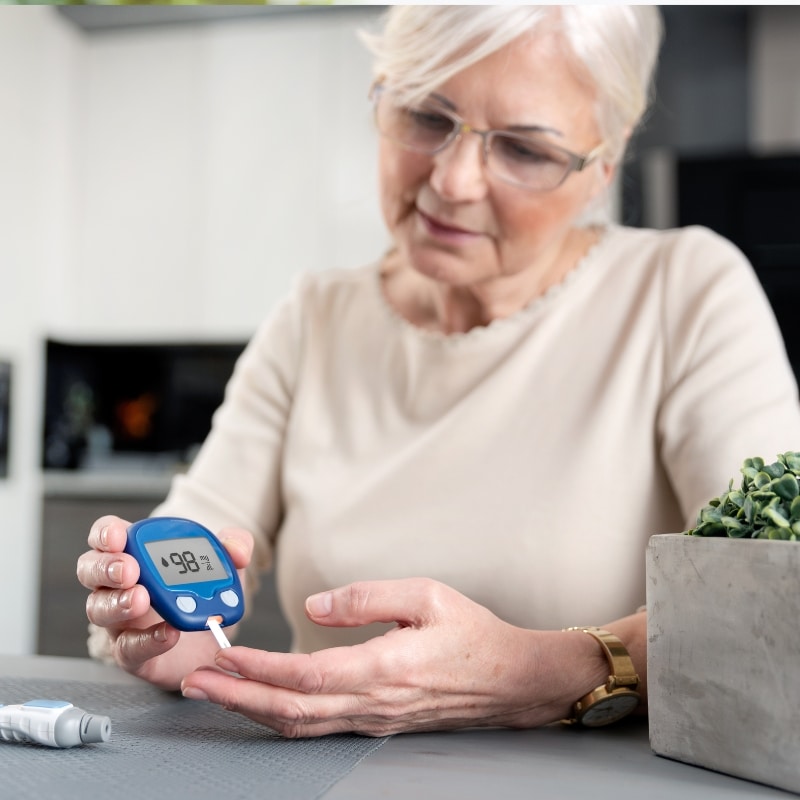Depression is one of the most common mental health conditions, affecting millions of people globally. It can lead to persistent sadness, loss of interest in daily activities, and severe impacts on daily functioning.
While many find relief through traditional treatments like antidepressant medication and psychotherapy, a significant portion of patients do not experience sufficient improvement. For these individuals, hope often lies in exploring alternative therapies. One such treatment that has made a significant difference is transcranial magnetic stimulation.
Understanding Transcranial Magnetic Stimulation (TMS)
TMS is a non-invasive procedure that uses electromagnetic pulses to stimulate brain nerve cells. This technique targets specific areas associated with mood regulation, particularly the dorsolateral prefrontal cortex. The goal of TMS is to reset and rewire these brain circuits to improve symptoms of depression.
The process is simple yet effective. A coil is placed on the patient’s scalp, delivering magnetic pulses that create small electrical currents. These currents adjust the firing patterns of neurons, enhancing neuroplasticity—the brain’s ability to form new neural connections. This ability to modify brain activity helps lift patients out of the cycle of depression.
Who Can Benefit from TMS?
TMS is often considered for patients with treatment-resistant depression (TRD), a form of major depressive disorder (MDD) that does not respond adequately to standard therapies. According to UC San Diego Health, TMS is suitable for adults who have not achieved significant improvement with traditional treatments. However, TMS may not be an option for individuals with epilepsy, seizure disorders, or metal implants in the skull.
Kate Kelly, who battled depression for over three decades, described her experience with TMS as life-changing. For years, she felt trapped in what she called a “black fog.” After starting TMS, she gradually noticed a transformation. By the end of her sessions, she felt “lighter” and more confident—a stark contrast to her previous state.
How TMS Works
The treatment involves applying electromagnetic pulses to the scalp, creating electrical currents that target specific brain areas involved in depression. Most commonly, TMS is aimed at the dorsolateral prefrontal cortex. This part of the brain is known to have reduced activity in people with depression. By stimulating this area, TMS helps “reboot” the brain’s mood-regulation network.
The procedure usually requires several sessions to be effective. Patients typically undergo TMS five days a week for four to six weeks. Each session takes about 20 to 50 minutes. While initial improvements may be seen after 10 to 15 sessions, significant relief is often reported after completing the full course.
What Does a TMS Session Feel Like?
Many patients wonder what the actual treatment feels like. The sensation is often described as a series of pricks or pulses on the scalp. Some liken it to a woodpecker tapping on the head, which can be unusual but not painful. The pulses can take some time getting used to, but they are not uncomfortable. Sessions involve brief bursts of stimulation followed by pauses, giving patients a chance to adjust.
Side effects are minimal, with mild headaches being the most commonly reported issue. These headaches generally subside within 24 hours. Other side effects, such as facial muscle twitches, are rare and temporary. The risk of seizure is extremely low, estimated at one in 30,000 sessions.
The Effectiveness of TMS
One of the most compelling reasons TMS is gaining recognition is its effectiveness. According to Harvard Health, 50% to 60% of individuals who have not responded to medication show significant improvement with TMS. About one-third of these patients experience complete remission, meaning their symptoms disappear entirely.
Although results vary, many patients find relief lasting for six to nine months. Some even report benefits for years, especially when they follow up with additional treatments like therapy, medication, and healthy lifestyle changes. Maintenance TMS can be an option for those who wish to prevent relapse.
While some patients need follow-up sessions, the treatment’s benefits tend to persist. If TMS works well initially, it often continues to be effective for subsequent treatments. The ability to return for booster sessions ensures that patients maintain their well-being over time.
Why Choose TMS Over Other Treatments?
TMS stands out due to its safety and minimal side effects compared to other treatments. Here are some specific reasons why TMS is preferred:
- Non-Invasive Nature: TMS does not involve surgery or anesthesia, making it a non-disruptive option that allows patients to remain awake and alert throughout the procedure.
- Minimal Side Effects: Unlike antidepressants, which often come with side effects such as weight gain, sexual dysfunction, or emotional blunting, TMS has fewer and milder side effects. The most common side effect is a mild headache, which typically resolves within a day.
- No Memory Loss: Compared to electroconvulsive therapy (ECT), which may cause short-term memory issues, TMS does not lead to cognitive impairments or memory loss.
- Quick Recovery: Patients can resume their normal activities immediately after each session. This means no downtime or need for special arrangements post-treatment.
- Targeted Treatment: TMS focuses on stimulating only the brain areas associated with mood regulation. This precision avoids influencing other brain functions, ensuring that only the necessary regions are affected.
- Personalized Approach: TMS treatment is tailored to each patient’s needs, adjusting the intensity and targeting based on individual responses to maximize effectiveness.
- Compatibility with Other Treatments: TMS can enhance overall outcomes by being used alongside other therapies, including talk therapy and medication. Patients often report that their response to traditional treatments improves after undergoing TMS.
Future Potential of TMS
TMS has proven its worth in treating depression, but its potential extends beyond this application. Ongoing research is exploring its effectiveness in treating conditions like OCD, PTSD, and chronic pain. While some of these uses are considered “off-label,” the early results are promising. The success of TMS in promoting neuroplasticity suggests that its application could broaden in the coming years.
A Path to Renewed Hope
For individuals battling treatment-resistant depression, TMS offers a beacon of hope. With its non-invasive nature, minimal side effects, and significant success rates, it provides an effective alternative for those who have not found relief through traditional means.
At Zeam Health & Wellness, we believe in offering advanced and compassionate care, ensuring every patient has the opportunity to reclaim their life and well-being.
Transcranial Magnetic Stimulation is not just a treatment—it is a lifeline that continues to change lives, allowing people to experience happiness, confidence, and renewed purpose.




